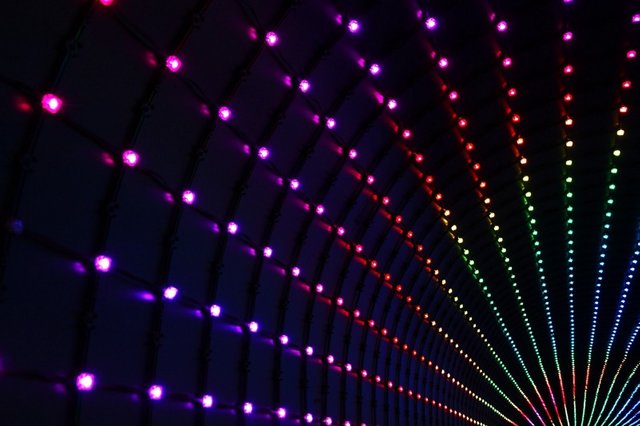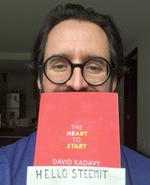Your masterpiece will make itself with these seven mental states

Great creative work is difficult and seems to come at random. You know you can have great idea at any moment, but you still need to do the work to make it a reality.
I’ve found that writing a book can be like this. It’s a big creative project with a long timeline and lots of unknowns. But if I manage my creative energy according to seven mental states, my best work practically makes itself.
I powered through writing my first book with brute force. I locked myself in my apartment through one of the worst Chicago winters in history. It was such a traumatic experience, it was another six years before I released another book.
Along the way, I developed a way of managing my creative energy for maximum creative productivity. In fact, I quadrupled my output.
The seven mental states of creativity
I divide my creative work according to seven mental states:
- Prioritization: Establishing priorities.
- Generation: Creating the work.
- Exploration: Following your curiosity.
- Research: Answering specific questions.
- Polish: Putting on the finishing touches.
- Administration: Taking care of the pesky details.
- Recharge: Resting to replenish your energy.
Each of these mental states takes a different kind of thinking. Each of these mental states builds momentum for other mental states. Each of these mental states creates the conditions for explosive insights to occur.
How each of the seven mental states contributes to book-writing
Here’s how these seven mental states contribute to the process of writing a book:
- Prioritization: Having clear priorities frees me up to focus on the task at hand. When I plan a timeline, create a deadline, or even establish an outline, I’m clarifying priorities so I can focus my creative energy.
- Generation: Doing the actual writing is generation. The writing doesn’t have to be particularly good at first, because I refine it later with other mental states.
- Exploration: Exploring my curiosities leads me to the raw material that I use to find good ideas. Exploration can lead me to big ideas, such as an idea behind an entire book, or smaller ideas, such as a story I can use to illustrate a concept.
- Research: I research to answer particular questions about my subject. I may need to quickly look up a fact on Wikipedia, read an academic paper, or reference the thousands of highlights I’ve accumulated in my daily reading.
- Polish: I polish when I revise a draft, whether it’s for structure, factual accuracy, or spelling and punctuation.
- Administration: There are always pesky details I have to take care of to make a book happen. I have to keep my business running by taking care of finances, for example.
- Recharge: I’m sure to intentionally recharge to replenish my creative energy.
How the seven mental states serve creativity
Generation is sort of the “apex” mental state of all of these. Each of these mental states helps make sure that the time I spend in generation is as creative
and productive as possible.
Prioritization makes it so I don’t worry that I’m forgetting something. I can be completely present when I’m generating.
Exploration fills my mind with the raw materials of creative insights. Creative insights are all about connecting disparate things. Exploring my curiosity gives me lots of things to connect when I’m generating.
Research and Polish both require a very goal-oriented, “narrow”-thinking mindset. That mindset is the opposite of the “wide”-thinking mindset I want when I’m writing. Knowing I’ll take care of research and polishing later keeps me focused on generating.
Administration doesn’t require my best mental energy. But to be focused on generating, the rest of my business needs to be running smoothly.
Recharging ensures that I have creative energy at all. It also provides crucial incubation for connecting ideas.
The seven mental states sometimes overlap
The seven mental states of creativity are not mutually exclusive, with crisp borders. They’re more like colors on a rainbow, each with a name, despite the fact that they sit on a continuous spectrum.
Some of these mental states will overlap. When I’m reading for Exploration, for example, I find that it Recharges me. That reading accumulates highlights that I later reference for Research. When I Research, I’m also Polishing. Sometimes I Explore ideas to help establish Priorities.
Switch mental states according to skill level
Sometimes you stay in one mental state for a long time. Other times, you switch amongst mental states rapidly. It all depends upon your skill level, and the demands of the project. Is it slow creativity or fast creativity?
If I’m not sure I have a good grasp on a new subject I’m writing about (meaning it’s slow creativity for me), I’ll be more careful not to switch mental states. I’ll have a focused Research session, with a separate focused Generation session.
In these cases, if I’m writing prose and come across a fact I don’t know, I’ll [put it in brackets]. I can stay in the Generation mental state, knowing that I’ll Research later.
If I know the subject well (meaning the subject is fast creativity for me), I can switch around easily. I can stop writing (Generation) to look up a fact (Research), then go straight back to writing. I may even edit as I write (which would be Polish), or take a quick break to Recharge and gain clarity.
How to arrange the seven mental states according to daily energy
Your energy level fluctuates throughout your days. If you work with these fluctuations, you can make the most of your creative energy.
For example, here is how my level of discipline fluctuates throughout the day.
Being disciplined is good for the mental states of Prioritization, Research, and Polish. Being disciplined might also be good for Administration, but I would rarely use my best energy for Administration.
My level of creativity fluctuates like this throughout the day.
This creative state is obviously good for Generation. It’s also good for Exploration. My thinking is “wide.” I can take in and consider a lot of possibilities. I can connect those possibilities to make ideas. Sometimes those ideas are good.
Notice that my level of creativity is the exact opposite of my level of discipline in the mornings. This is because being groggy correlates with creativity. My prefrontal cortex is still sleeping, so it can’t spoil the party.
This doesn’t mean that I can’t have a great idea in the afternoon or the evening, or that I can never handle some research on a morning. Again, these aren’t strict categorizations, but rather soft contours on the mental landscape.
Based upon these daily fluctuations, I arrange my work like so:
- Generation in the mornings.
- Prioritize, Research, Polish, and Administration in the afternoons.
- Exploration and Recharge in the evenings.
Why don’t I Explore in the mornings if I’m in a creative mental state? Because my Generation sessions are that important. Also, I find Exploration to be Recharging, so it’s more effective in the evenings.
Again, this doesn’t mean that I never Explore on a morning or an afternoon. It also doesn’t mean that I never Research or Prioritize on a morning.
How to arrange the seven mental states according to weekly energy
Aside from daily fluctuations of energy, your energy also fluctuates throughout your week.
For example, here’s how my level of discipline fluctuates throughout the week.
My discipline level is higher earlier in the week. It peaks on Tuesday, then wanes as the week goes on.
Here is how my creative energy fluctuates throughout the week.
My creative energy fluctuates almost in lock-step with my level of discipline throughout the week. The only exception is that my creative energy peaks on Monday, while getting back up to speed after the weekend makes my discipline peak on Tuesdays.
I wrote in previous posts about how I use a front-burner vs. back-burner concept to account for these fluctuations.
When my discipline is high, I tackle more daunting front-burner projects. When my discipline is low, I use habits or instead work on back-burner projects.
Remember that I arrange front-burner and back-burner projects throughout my week like so.
- On Mondays I use high discipline and high creativity to tackle front-burner projects.
- On Tuesday afternoons I start to work on back-burner projects (such as my podcast).
- Later in the week, I allow social interaction (such as podcast interviews), and work on other less-important details.
My front-burner project is usually a book. Sometimes there will be another big project that takes its place.
This is how I use the mental states throughout the week.
- Every morning starts with a front-burner Generation session. Starting mid-week, I allow back-burner Generation sessions.
- I sometimes use Mondays to Explore possibilities in my business and set Priorities. I call these “Prefrontal Mondays.”
- I Polish on afternoons. More so on Tuesdays and Wednesdays, when I have more discipline.
- I save Administrative work for Fridays.
These aren’t strict, and sometimes they change. If I’m finishing up a book, I’ll be doing a lot of Polish. When I’m writing a Medium post every morning like I am now, I obviously have to switch between many mental states rapidly.
Making mental states work for you
You might feel like you don’t have as much command over your schedule as I do. This might be true. Don’t let it keep you from adopting mental states in your work.
Keep in mind that I’m doing many things I wouldn’t do if I had more resources. I would love to off-load more Administrative work, or do less of other things in my business so I could do more book-writing and podcast interviews.
Also keep in mind that I prioritize for a creator role. You may have a different role you’re prioritizing for. In fact, my own schedule changes according to the role I’m playing in my business. If I’m trying to come up with a new strategy, or marketing a new book, I will arrange my work completely differently.
You might also feel overwhelmed by the complexity of arranging work by discipline level, front-burner/back-burner, and mental state. Keep in mind that it’s an ongoing practice.
Here’s how I’d recommend to get started:
- Choose the mental state most important to your work (Generation if you’re a creator, maybe Prioritization if you’re an executive).
- Pick a daily time slot to be in that mental state. If you really have little time, make it weekly.
- After several weeks of successfully practicing that mental state, pick a time slot for the mental state that is most threatening to your target mental state (for me this is Administration)
- Pick a weekly time slot to be in that mental state. When a task comes up that fits that mental state, see if you can delay until that time slot.
- As you keep your habit of being in your target mental state, notice how other mental states start to fall into place.
With enough practice, working with these seven mental states can help you focus your creative energy and make your best work come easily.
I quadrupled my creative productivity. Sign up and I'll send you the tools I count on »

Beautiful broken down, thanks for sharing!